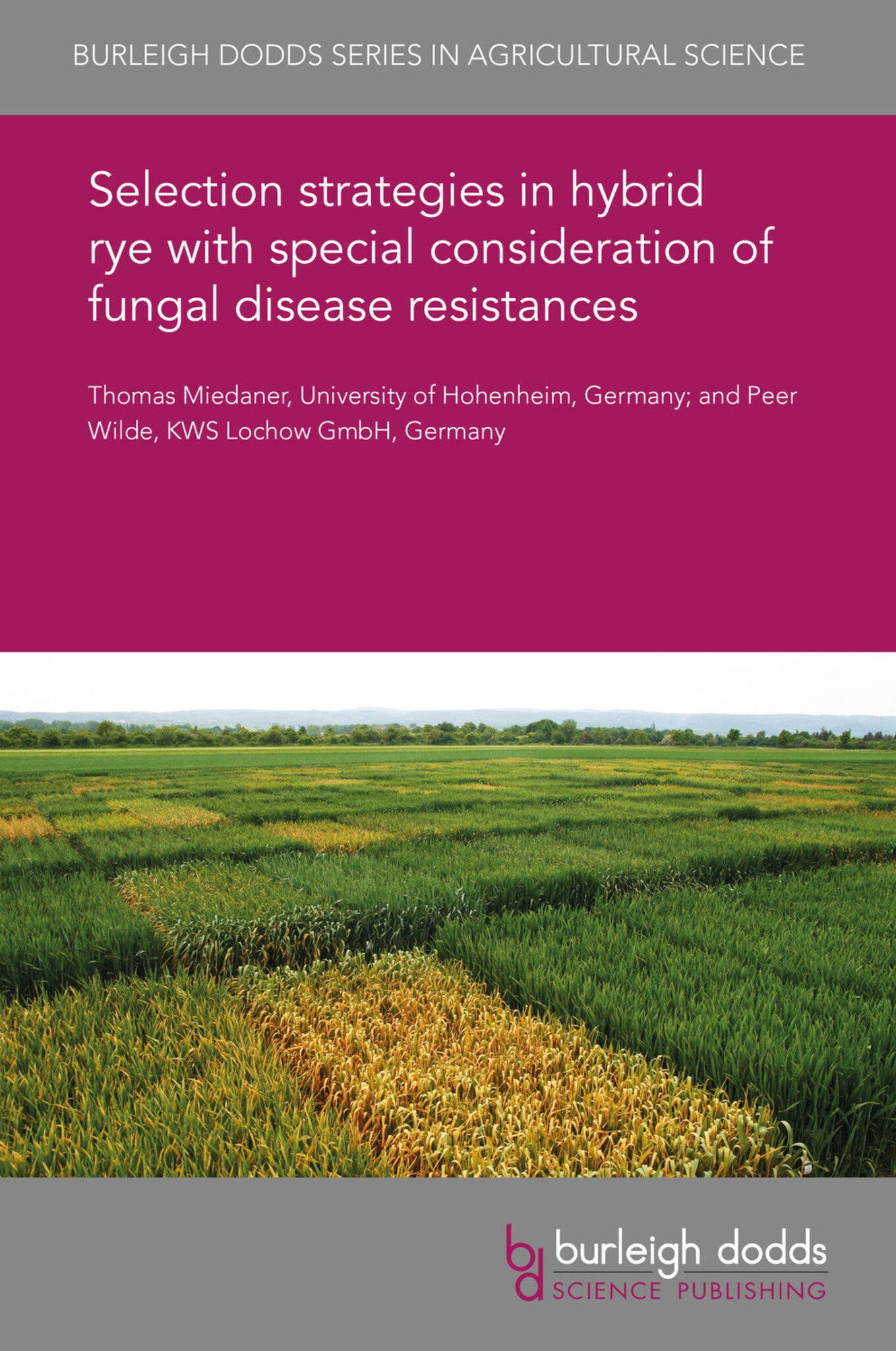We're sorry. An error has occurred
Please cancel or retry.
Selection strategies in hybrid rye with special consideration of fungal disease resistances
Regular price
£25.00
Sale price
£25.00
Regular price
£25.00
Unit price
/
per
Sale
Sold out
Re-stocking soon
Although winter rye is known for its high tolerance to biotic stress factors, several diseases are occurring in most rye-growing countries: snow mold, brown foot rot, powdery mildew, leaf rust, ste...
Read More

Some error occured while loading the Quick View. Please close the Quick View and try reloading the page.
Couldn't load pickup availability
- Format:
-
27 June 2019

Although winter rye is known for its high tolerance to biotic stress factors, several diseases are occurring in most rye-growing countries: snow mold, brown foot rot, powdery mildew, leaf rust, stem rust, Fusarium head blight, and ergot. For hybrid breeding, resistance selection is important due to the restricted genetic variation within a cultivar. For powdery mildew and the two rusts, race-specific qualitative resistances based on single resistance (R) genes and quantitative resistances have been described. For the other diseases only quantitative resistances can be selected. This chapter describes the features of snow mold, foot rot, powdery mildew, leaf rust, stem rust, Fusarium head blight and ergot. The chapter examines and assesses strategies for resistance selection and looks ahead to future trends in this area.

Price: £25.00
Publisher: Burleigh Dodds Science Publishing
Imprint: Burleigh Dodds Science Publishing
Series: Burleigh Dodds Series in Agricultural Science
Publication Date:
27 June 2019
ISBN: 9781838798284
Format: eBook
BISACs:
TECHNOLOGY & ENGINEERING / Agriculture / Sustainable Agriculture, Agronomy and crop production, TECHNOLOGY & ENGINEERING / Agriculture / Agronomy / Crop Science, Sustainable agriculture

1 Introduction
2 Snow mold 3 Foot rot 4 Powdery mildew 5 Leaf rust 6 Stem rust 7 Fusarium head blight 8 Ergot 9 Strategies for resistance selection 10 Future trends and conclusions 11 Where to look for further information 12 References



